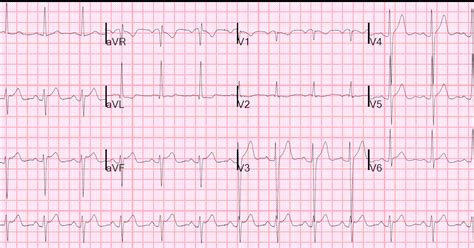lv strain References. Sovari AA, Farokhi F, Kocheril AG. Inverted U wave, a specific .
COCO MADEMOISELLE. EAU DE PARFUM SPRAY - 100 ml. £145. Add to bag. Shop COCO MADEMOISELLE EAU DE PARFUM SPRAY - 100 ml and discover more Fragrances at CHANEL.com. Shop now and enjoy complimentary samples.
0 · mylvhn mychart
1 · my lvhn sign in
2 · lvh with repolarization abnormality
3 · lvh strain pattern vs ischemia
4 · lv strain on ekg
5 · lv strain normal values
6 · lv strain echo normal values
7 · global longitudinal strain chart
1-48 of over 30,000 results for "100 cotton t-shirts" Results. Price and other details may vary based on product size and color. Overall Pick. +6. Fruit of the Loom. Men's Eversoft .
Learn how to diagnose left ventricular hypertrophy (LVH) from ECG, using voltage and non-voltage criteria. See examples of LVH with ST depression and T wave .RWPT in wide QRS complex tachycardia. R-wave peak time (RWPT) may be .
Right ventricular strain pattern with T-wave inversion and ST depression in the right .

ECG Criteria for Left Atrial Enlargement. LAE produces a broad, bifid P wave in .In LBBB, conduction delay means that impulses travel first via the right bundle .
References. Sovari AA, Farokhi F, Kocheril AG. Inverted U wave, a specific .Left Axis Deviation = QRS axis less than -30°.. Normal Axis = QRS axis between .
mylvhn mychart
Learn about the causes, symptoms and treatment of left ventricular hypertrophy, a thickening of the heart's main pumping chamber. This condition can make it harde.

This article reviews the definition of left ventricular strain, outlines the types of strain and reviews how strain is acquired and measured. In addition, the advantages of strain analysis over LVEF .This article reviews the definition of left ventricular strain, outlines the types of strain and reviews how strain is acquired and measured. In addition, the advantages of strain analysis over LVEF as well as the incremental prognostic .
Learn how to assess LV systolic function using ejection fraction (EF) or myocardial strain, and how to interpret the results in different clinical scenarios. The article reviews the .
Learn how to interpret ECG changes in LVH, a condition that affects the size and function of the left ventricle. Find out the common causes, indexes, signs and complications of LVH.
my lvhn sign in
Prospective, multicenter studies have found that STE-assessed radial, circumferential, and transverse strain are useful in determining the presence of mechanical dyssynchrony and in predicting response to cardiac .
This article reviews how to measure LV global longitudinal strain (LV GLS) by speckle tracking echocardiography and its role in assessing LV systolic function. LV GLS is an earlier marker of LV dysfunction than LVEF and has prognostic .BACKGROUND: The definition of normal values of left ventricular global longitudinal strain (GLS), global circumferential strain, and global radial strain is of critical importance to the clinical .
Left ventricular hypertrophy (LVH) refers to an increase in the size of myocardial fibers in the main cardiac pumping chamber. Such hypertrophy is usually the response to a . Top left: LV longitudinal strain map in a patient who presented with heart failure with preserved ejection fraction secondary to cardiac amyloidosis. There is marked impairment of global longitudinal strain with an ‘apical sparing’ pattern that is typical but not specific for cardiac amyloidosis. Top right: LV longitudinal strain map in a .
LV strain and SR decrease with age, body weight, central obesity, and RWT. Our current study resulted in the proposal for diagnostic thresholds for strain and SR, based on a healthy subgroup recruited via random sampling of the population. Echocardiography, Population, Left ventricular function, Strain.BACKGROUND: The definition of normal values of left ventricular global longitudinal strain (GLS), global circumferential strain, and global radial strain is of critical importance to the clinical application of this modality. The investigators performed a meta-analysis of normal ranges and sought to identify factors that contribute to reported variations.
Echocardiographic global longitudinal strain (GLS) has been recommended as a means to follow patients at risk of cancer chemotherapy-related left ventricular (LV) systolic dysfunction. The following are pragmatic points to remember: Dilated cardiomyopathy: There is marked left ventricular hypertrophy with repolarisation abnormality (LV “strain” pattern) in V5-6; LV dilatation has produced an interventricular conduction delay mimicking LBBB — however, this is not LBBB as the morphology is not typical and there are small Q waves in V5-6 (the presence of Q waves in V6 rules out . Left ventricular (LV) systolic wall strain is a new candidate for prognostic indicator of hypertensive heart failure. It remains unclear how underlying transmural structural remodeling corresponds to LV wall systolic deformation as hypertensive hypertrophy progresses. We fed 68 Dahl salt–sensitive rats a high-salt (hypertensive group) or low-salt diet (control group) from 6 . Background—Left ventricular (LV) global longitudinal strain (GLS) is a measure of the active shortening of the LV in the longitudinal direction, which can be assessed with speckle-tracking echocardiography. The aims of this evaluation were to validate the prognostic value of GLS as a new index of LV systolic function in a large cohort of patients with chronic .
lvh with repolarization abnormality
Segmental LV strain maps provide diagnostic clues in specific cardiomyopathies, when evaluating LV dyssynchrony and ischemic dysfunction. Strain imaging is a promising modality to quantify right ventricular function. Left atrial strain may be used to evaluate LV diastolic function and filling pressure.All strains showed lower absolute values with higher age, except for LA and RA contractile strains, which were higher. The feasibility for strain was overall good (LV 96%, right ventricular 83%, LA 94%, and RA 87%). All chamber-specific strains were associated with age, and LV strain was associated with sex.

The classic left ventricular (LV) strain pattern of ST segment depression and T-wave inversion on the left precordial leads of the standard resting ECG is a well-known marker of the presence of anatomic LV hypertrophy (LVH). 1–6 Furthermore, the occurrence of this electrocardiographic abnormality of ventricular repolarization has been associated with a .Introduction: A number of studies defined normal reference values of three-dimensional (3D) speckle-tracking echocardiography (3DSTE)-derived left ventricular (LV) strains. The present study aimed to quantify normal reference values of LV strains in healthy adult population in real clinical world settings in different age groups, and to determine age- and gender-dependence . Three-dimensional (3D) left ventricular (LV) myocardial strain measurements using transthoracic 3D echocardiography speckle tracking analysis have several advantages over two-dimensional (2D) LV strain . Results. A total of n = 14 patients met inclusion and exclusion criteria and were analyzed. There was a significant reduction in the infarct size, as measured by LGE mass percentage of the left ventricular muscle mass, between the initial and follow-up CMR (19.7%, IQR 12.2–23.9 vs. 17.1%, IQR 8.3–22.5, p = 0.04). Initial strain parameters were inversely .
The strain curve contains both amplitude and timing information, and we have focused on strain magnitude as a potential marker of LV function. The use of strain to measure timing has been applied to dyssynchrony analysis, 5 and radial strain may be superior to other strain vectors for this purpose. However, the thresholds for abnormal left ventricular (LV) strains, particularly the lower limits of normal (LLN), are not well established. This meta-analysis determined the mean and LLN of two- (2D) and three-dimensional (3D) LV strain in healthy subjects and factors that influence strain measurements. Bullseye plots of time to peak longitudinal strain are shown in two T2DM patients using EchoPAC workstation 2DSTE analysis. The endocardium of the LV was tracked point by point in the apical four . LV strain was measured as endocardial global longitudinal strain (LV global longitudinal strain [LV-GLS]), the average of end-systolic strain in all LV segments, using a combination of apical 2-, 3-, and 4-chamber views. Clinical Outcomes. Patients in the registry were prospectively followed. We analyzed a composite outcome of death (all-cause .
ferragamo flats uae
Pseudomonas aeruginosa LV strain produces phenazine-1-carboxylic acid – PCA, phenazine-1-carboxamide – PCN, 2-carboxi-2-heptano-indol-3-ona – IDC, and fluopsin C – OAC. These molecules from secondary metabolism showed a potential for many biotechnological applications. The concentration of every compound obtained in the culture medium was below .
bvlgari watches for sale
But now, 11 years on, we must say goodbye to the 39mm Explorer as the 36 is back. As you might expect, this new 36 Explorer (reference 124 270) feels extremely familiar to previous 36mm.
lv strain|lv strain echo normal values



























